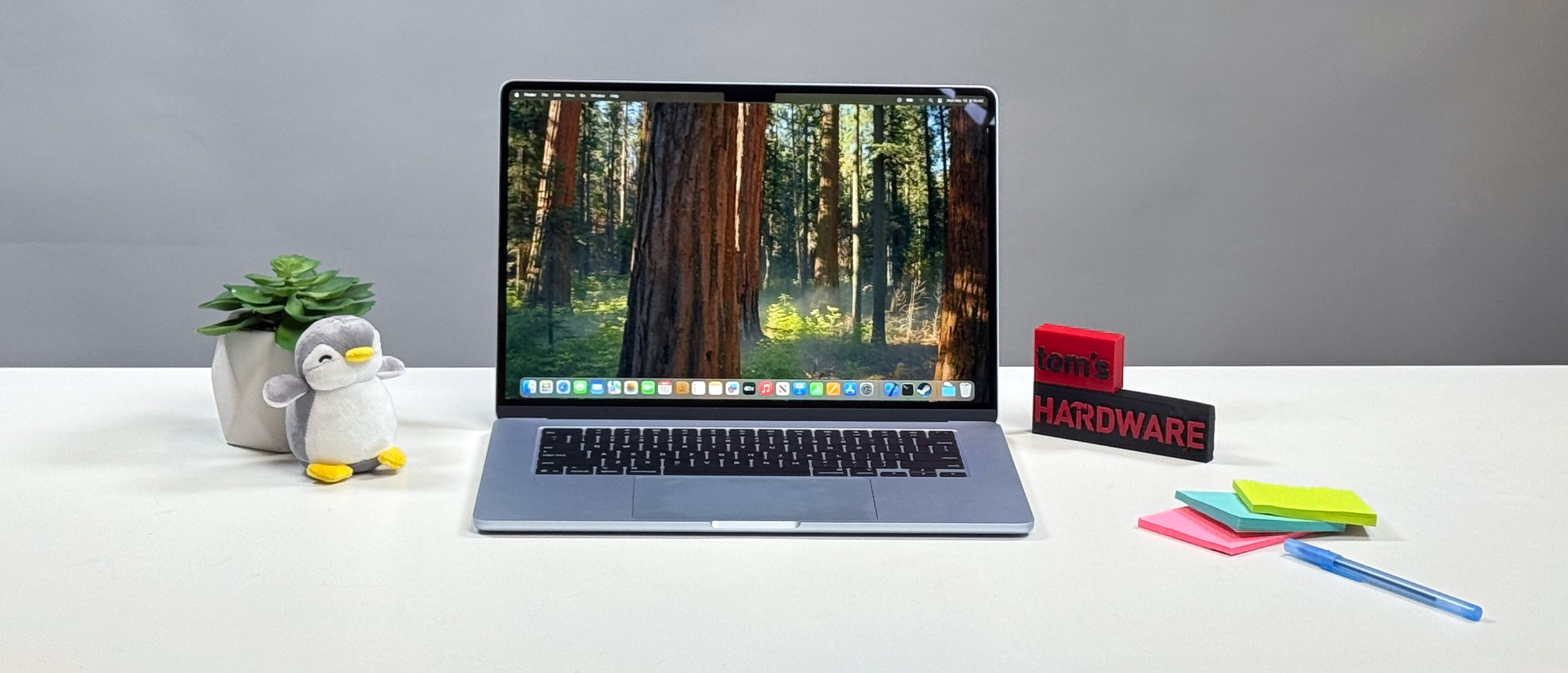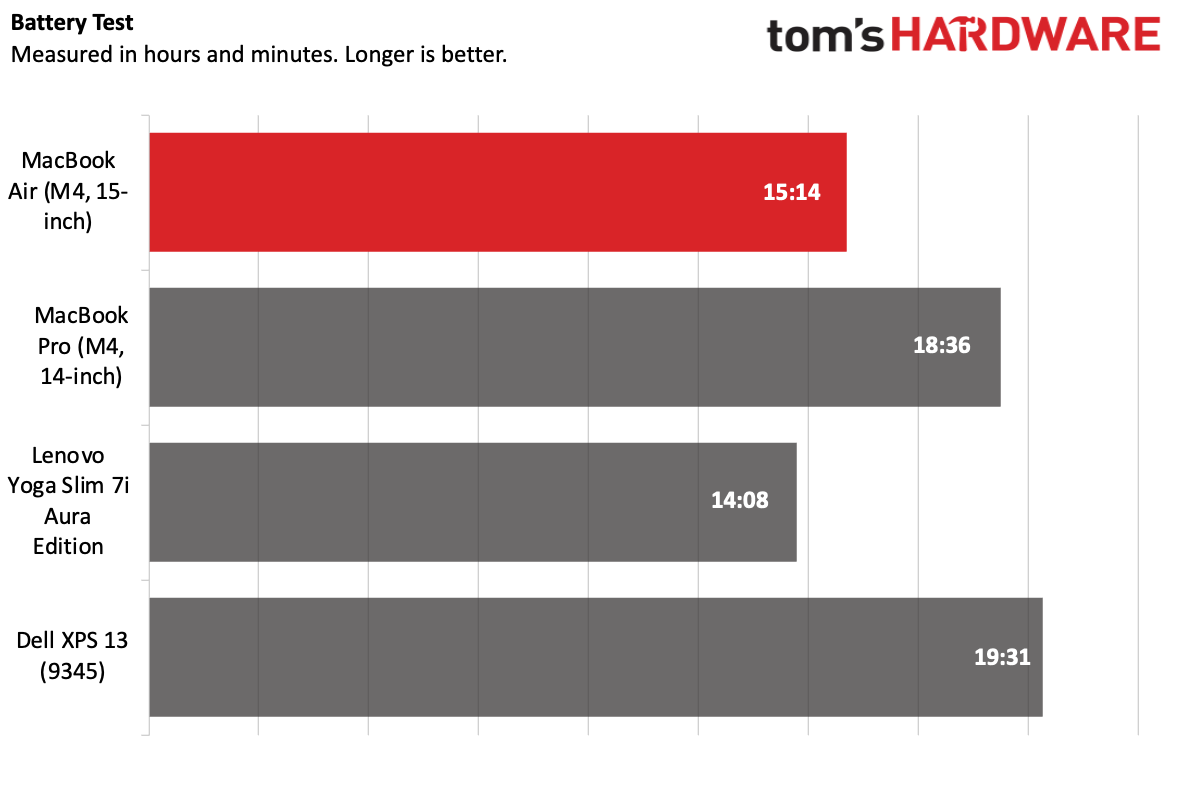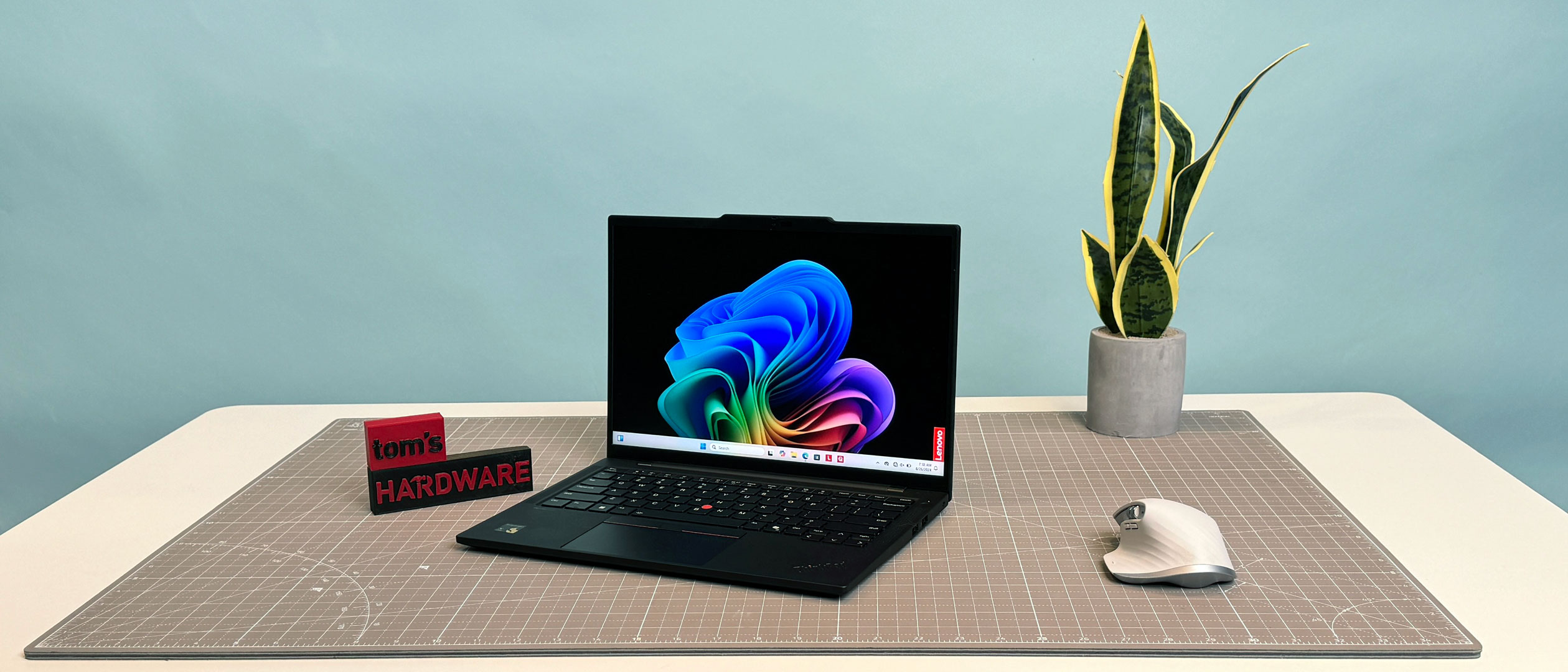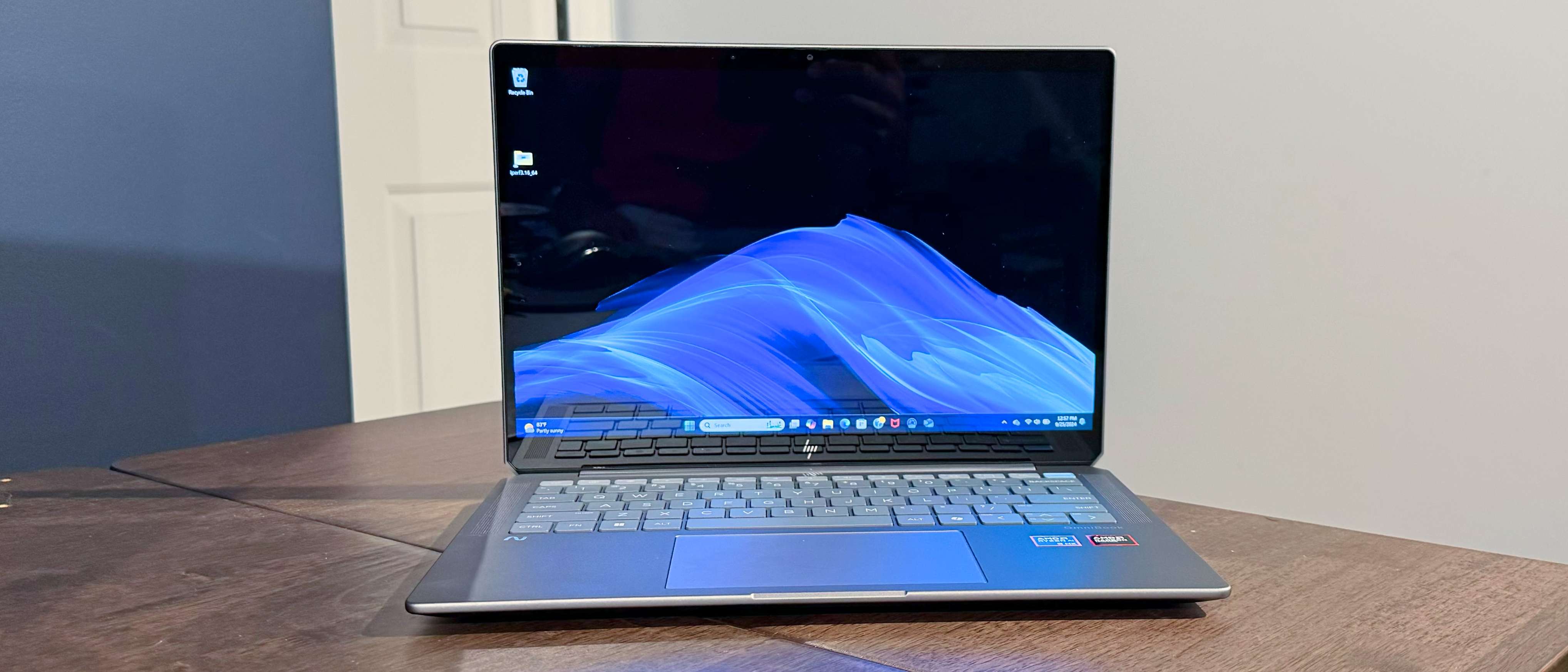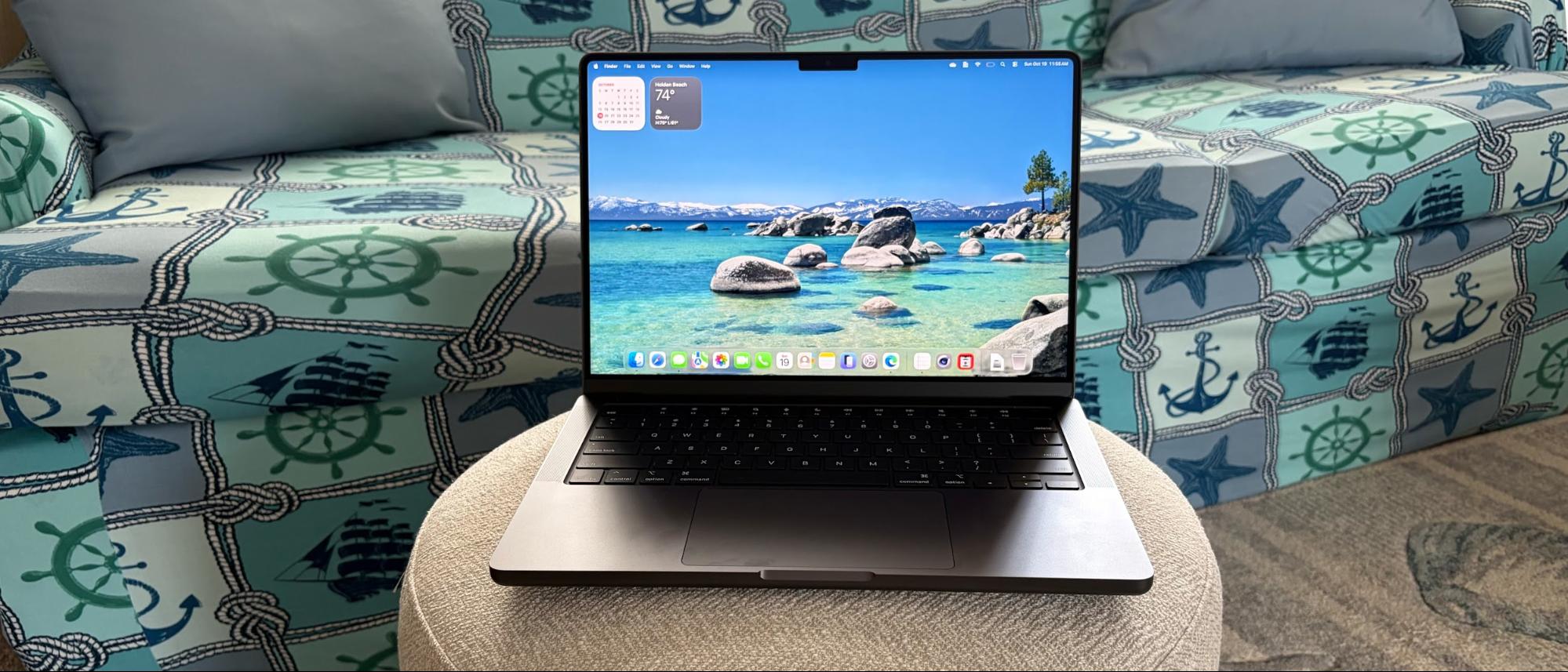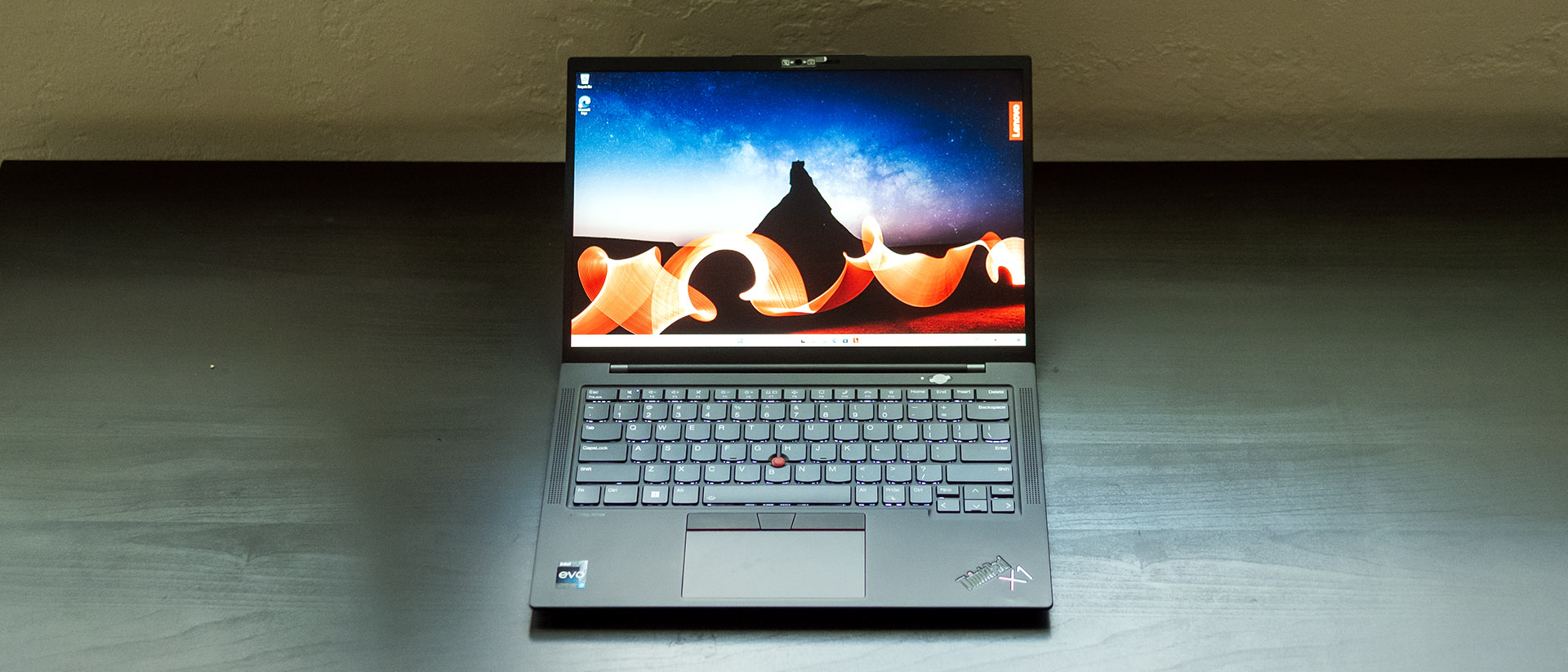Best Ultrabooks and Premium Laptops 2025
The best ultrabooks and premium laptops for work, play and general use.
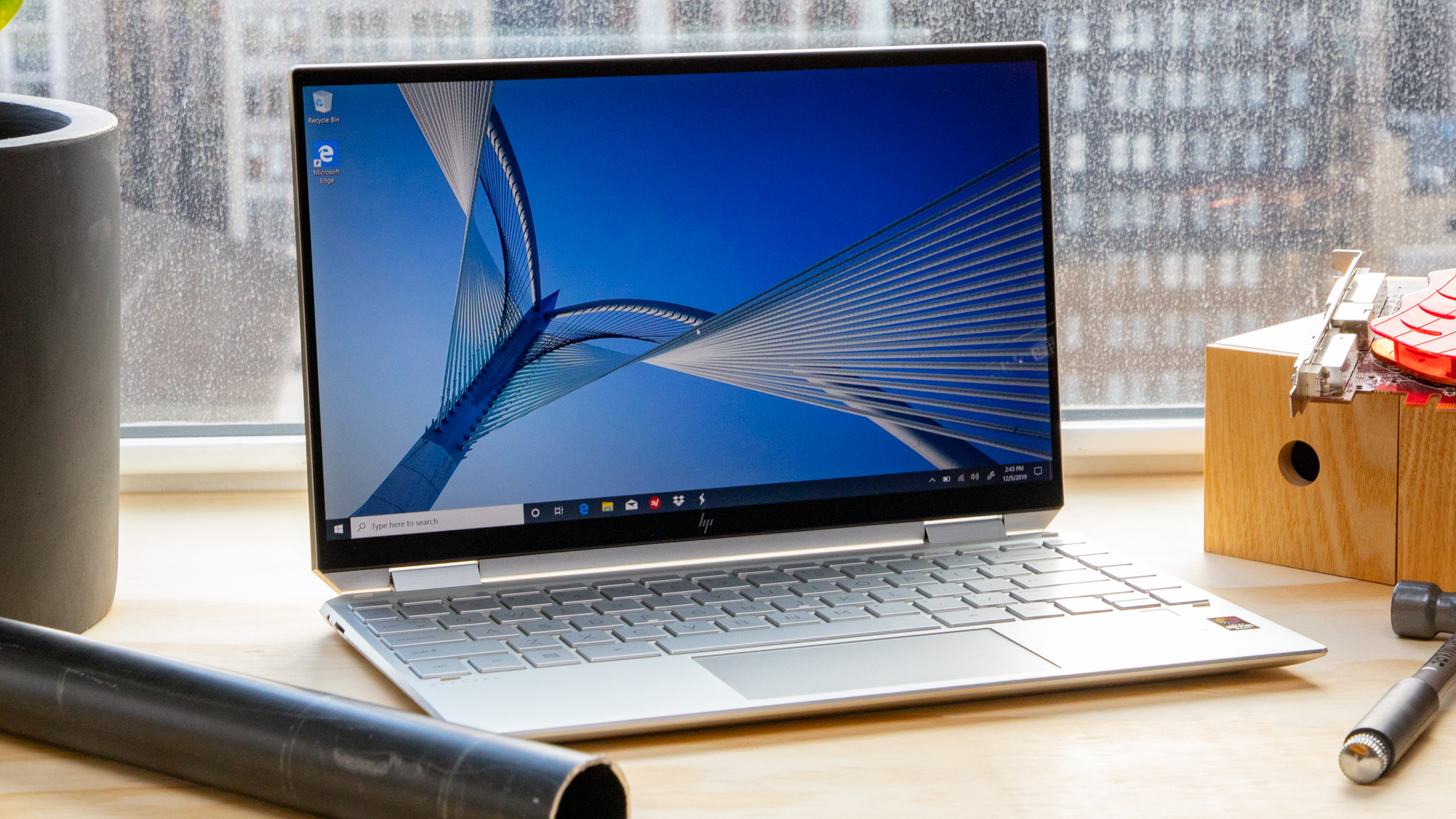
Laptops are some of the most important tools people use today. Whether you're a student submitting homework, at work typing away at documents, spreadsheets or presentations, or you're just someone who wants to access resources online and connect with family and friends, you want a notebook with the components and features you'll need to get the job done. That means a great screen, a comfortable keyboard, and long battery life (nice design doesn't hurt, either!). If you’re looking for a powerful laptop that easily fits in your bag and doesn’t break your back, you're looking for what some call an "ultrabook."
The “ultrabook” moniker was originally coined by Intel in 2012 and used to refer to a set of premium, super-thin laptops that met the chipmaker’s predefined standards. Much of this occurred as the PC world was first catching up to the original MacBook Air. However, just as many people refer to tissues as Kleenexes or web searching as Googling, the term ultrabook commonly refers to any premium ultraportable laptop, whether it carries Intel’s seal of approval or not.
Of course, there's always new tech coming down the pipe. Intel's most recent chips are its Intel Core Ultra (Series 2) chips. AMD's "Strix Point" Ryzen AI machines are also powerful options, though we haven't seen the graphics-heavy Strix Halo chips in laptops (it did appear in a tablet and some desktops).
On Macs, Apple's top chips are the M4 series. The standard M4, M4 Pro, and M4 Max can be found in the MacBook Pro and MacBook Air lineup. Qualcomm's Snapdragon X Elite and Plus series chips are pushing Windows on Arm, but we're waiting to see what the next generation looks like.
Best Ultrabooks and Premium Laptops You Can Buy Today
Why you can trust Tom's Hardware
The Best Ultrabook (and Mac) overall
Specifications
Reasons to buy
Reasons to avoid
Apple's MacBook Air has become the default premium laptop recommendation. You get excellent build quality, long battery life, and strong performance. And this year, Apple dropped the price by $100.
The M4 versions have the new 12MP Center Stage webcam (up from 1080p) that, yes, still sits in a notch. And the latest chip also brings support for two external displays with the lid open.
We reviewed the 15-inch MacBook Air, which has a larger display and a six-speaker audio system, though we expect similar overall performance and battery life on the 13-inch model, which now starts at a cool $999. Our 15-inch review unit lasted for over 15 hours on a charge.
This laptop is fanless, which means the M4 SoC isn't actively cooled. In our testing, we found that the chip did throttle under heavy workloads like rendering. But for everyday tasks, such as web browsing, writing, generating spreadsheets, and sending emails, that just means you'll have a Mac that doesn't make any noise.
Read: MacBook Air (M4) review
The best 2-in-1 convertible
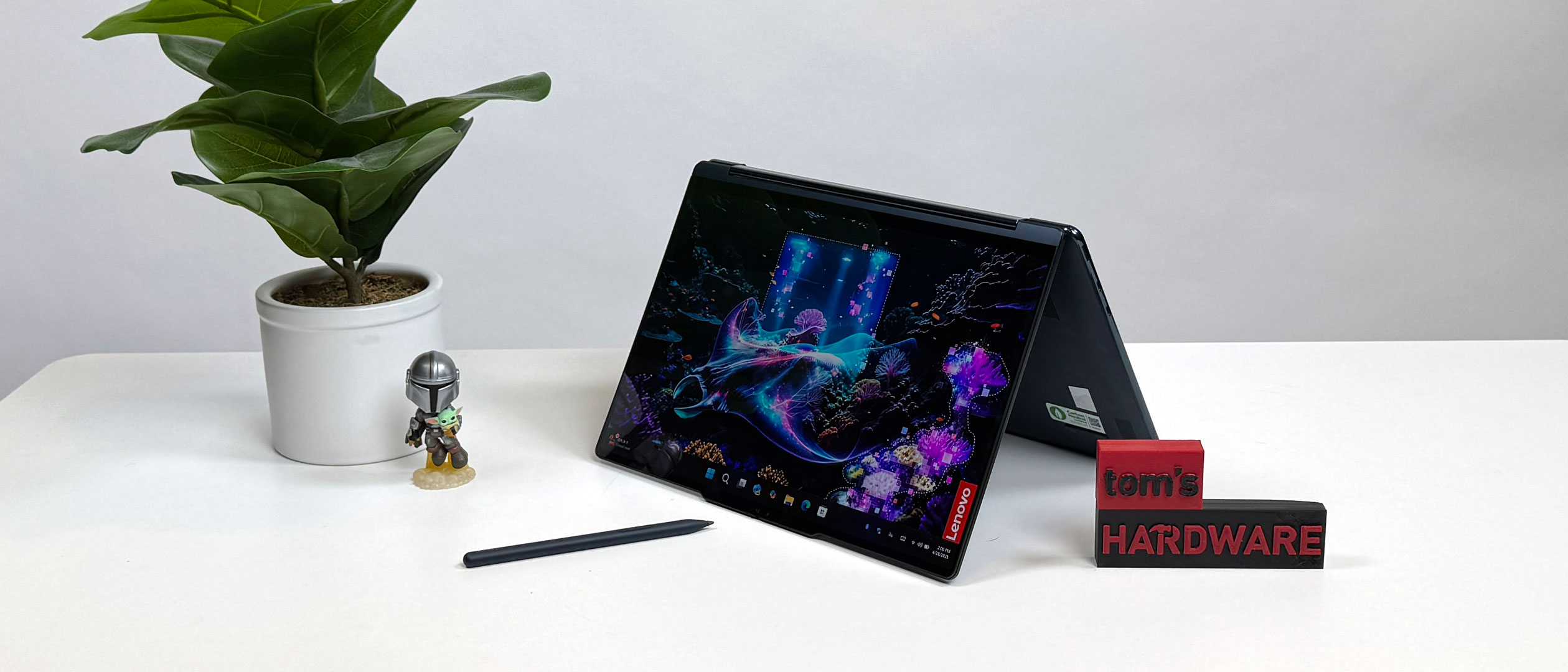
Specifications
Reasons to buy
Reasons to avoid
A great 2-in-1 needs all of the features of an outstanding normal laptop, including a strong build quality, a great display, and a long battery life. It just also has to flip into a tablet.
The Lenovo Yoga 9i 2-in-1 Aura Edition is a premium convertible with a beautiful, 14-inch OLED touchscreen that is far more colorful than much of the competition. Even if you question the wisdom of a 2880 x 1800 resolution on a small display, the quality of the panel here can't be denied.
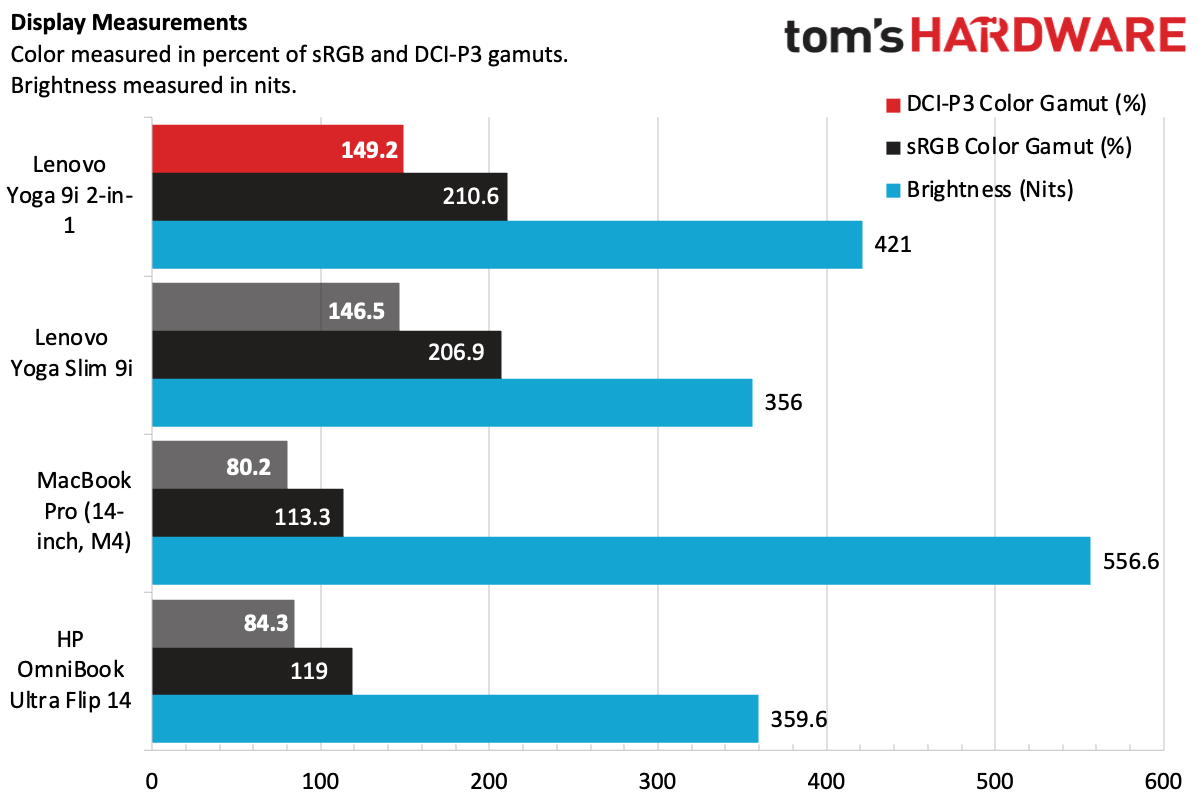
Meanwhile, you also get strong build quality, a clicky keyboard, and pretty decent battery life. The 5MP webcam is good enough for professional video calls, and also comes with a privacy shutter. The Yoga also comes with a stylus in the box.
The "cosmic" blue color is fun, but still professional. There are some design quirks, like the fact that Lenovo has gone with round, shiny edges on some parts of the laptop while others are matte and flat. It's a bit funky looking, but I was able to look past it.
There are a few downsides. If you do want to open the laptop for repair, it's extremely difficult to get the bottom back on. And to open it in the first place, you have to lift up an adhesive rubber foot. Additionally, there's a lot of bloatware on the system.
We tested this laptop at $1,499.99 with an Intel Core Ultra 7 258V, 32GB of RAM, and 1TB of storage. The price has gone up since we tested it, but if you find it at this sale price again, it's a great value.
Read: Lenovo Yoga 9i 2-in-1 Aura Edition review
Incredibly Long Battery Life
Specifications
Reasons to buy
Reasons to avoid
Look, I can try to sell you on the ThinkPad T14s's bright screen. I could try to tell you that ThinkPads are known for their great keyboards, or that you might appreciate the TrackPoint so that you don't have to take your fingers off the home row while you move the mouse.
Alternatively, I could point out that it lasted 21 hours on our battery test. You read that right. That's the longest we've seen.
Much of that is likely due to the Qualcomm Snapdragon X Elite processor's efficiency, though the 1920 x 1200 IPS panel probably helped (high-res OLED touch screens often require more power). The Snapdragon X Elite also offered solid performance.
At just under $1,700 as tested, it's on the pricey side. But if you demand Windows and battery life is your top priority, the ThinkPad truly impresses.
Read: Lenovo ThinkPad T14s (Gen 6, Snapdragon) review
Another great Windows clamshell
Specifications
Reasons to buy
Reasons to avoid
We can argue about how much the AI PC is really any sort of revolution, but there are still some strong ultraportables coming out. The HP OmniBook Ultra puts the AMD Ryzen AI 9 HX 375 in a sleek chassis with strong productivity performance.
HP is offering up decent battery life here, running for 12 hours and 52 minutes on our battery test. That's not the best, but all things considered including the high-resolution display, it's not bad. It's also nice to see Thunderbolt 4 ports on an AMD system, which is exceedingly rare.
The experience is knocked down a bit by a significant amount of bloatware, but if you're looking for a strong AMD laptop, the HP OmniBook Ultra is a strong competitor if you don't mind doing some uninstalling.
Read: HP OmniBook Ultra review
A more powerful Mac laptop
Specifications
Reasons to buy
Reasons to avoid
The MacBook Air is a great starting point, but if you want an air-cooled processor and a few more features, the base MacBook Pro adds a few niceties. The 14-inch MacBook Pro starts with an M5 processor, has three Thunderbolt ports (including one on the right side), and a beautiful micro LED display.
For those willing to spend an extra $150, there's a nano-texture display option that is completely worth it if you ever use your laptop outside. The matte display looks excellent, and was great on desks near windows.
As of this writing, Apple hasn't released the M5 Pro and Max variants of its latest chip. You can still find the M4 Pro and M4 Max in both the 14 and 16-inch versions of this laptop. We previously tested the M4 Pro in the 16-inch MacBook Pro.
Both the 14-inch and 16-inch laptops offer great speakers and beautiful displays, but you will have to pay quite a bit for any storage or memory upgrades you want, and you won't be able to make changes later.
Read: MacBook Pro (14-inch, M5) review
The Best Ultrabook for Work
Specifications
Reasons to buy
Reasons to avoid
There are plenty of reasons why the ThinkPad X1 Carbon is a classic. It's thin design and strong build quality are beloved by ThinkPad diehards. The latest model, the ThinkPad X1 Carbon (Gen 11), offers long battery life and great speakers.
Perhaps most critically, the ThinkPad X1 Carbon offers an excellent keyboard. Lenovo's reputation was built on great typing experiences, so this is crucial. For those who love Lenovo's TrackPoint, it's still here, allowing you to move the mouse without ever taking your fingers away from the home row on the keyboard.
The latest version comes with Intel's 13th Gen Core processors. We reviewed it with a Core i7-1355U, 16GB of RAM and a 512GB PCIe Gen 4 SSD.
The one real issue we had is that the base screen could benefit from being a bit brighter. Those who want the most vivid experience can opt for an OLED panel, but at a higher price.
When shopping for the ThinkPad X1 Carbon (Gen 11), keep an eye out for Lenovo's frequent sales, as there's often a deal available.
Read: Lenovo ThinkPad X1 Carbon (Gen 11) Review
The Best Windows Tablet
Specifications
Reasons to buy
Reasons to avoid
Microsoft may push the Surface Pro as a do-it-all AI machine, but the truth is it's just a really nice, portable, slim PC that lasts a long time on a battery and includes a beautiful OLED display. It's definitively one of the best Surfaces to date.
The Qualcomm Snapdragon X Elite processors offer enough performance to keep up with x86 competitors, making this one of the first Arm-based Surfaces that doesn't feel like it's lacking. Add on more Arm-compatible apps than ever, including the Chrome browser, and there's far less to miss from previous Intel models. That's not to say it's perfect — there are still some gaming issues, as well as drivers for specialized peripherals that may need to be rebuilt for the new platform.
The 45 TOPS NPU powers some of Windows 11's Copilot+ features, like Cocreator, Live Captions, and Windows Studio effects. None of these are showstoppers, but they're cool tricks.'
If you want a premium tablet running Windows 11, the Surface Pro is one of the only premium games in town. And that means paying a premium for a separate keyboard. But for those who love this form factor, the Surface Pro remains the best option out there.
Read: Microsoft Surface Pro review
Quick Ultrabook / Premium Laptop Shopping Tips
✅ Get a good keyboard
Whether you’re using an ultrabook to browse the web, send emails, code, write, or do other productivity work, the keyboard is one of your primary ways of interacting with your computer. Get something with responsive keys that aren’t mushy. Low-travel is ok if the keys have the right feel to them, but the last thing you want to do is “bottom out” while typing. Ideally, you can try out a store model before buying.
✅ Consider what you need in a screen
At a minimum, your laptop should have a 1920 x 1080 screen. Some laptops offer 4K options, though it’s sometimes harder to see the difference at 13-inches or below. While 4K may be more detailed, 1080p screens give you much longer battery life. OLED screens are becoming far more common on laptops, with deep blacks and bright colors, but often at the cost of battery life. Many laptop screens still use a 16:9 aspect ratio, but consider 16:10 or 3:2 if you want a taller screen that shows more of your work at a time. 16:10 has become increasingly popular over the last several years, while 3:2 is more rare.
✅ Some laptops can be upgraded
While CPUs and GPUs are almost always soldered down, some laptops let you replace the RAM and storage, so you can buy cheaper now and add more memory and a bigger hard drive or SSD down the road. But the thinnest laptops may not have that option, so buy with the future in mind. Some, like the Framework Laptop 13, are designed around being easily upgradeable.
✅ Battery life is important
Aim for something that lasts for 8 hours or longer on a charge (gaming is an exception) at a bare minimum. For productivity, many laptops easily surpass this number, so 10 hours would be even better. But be wary of manufacturer claims, which don’t always use strenuous tests. Some laptops are starting to add fast charging, which is a nice bonus that tops you off more quickly.
Finding Discounts on the Best Ultrabooks
Whether you're shopping for one of the best ultrabooks or a laptop didn't quite make our list, you may find savings by checking out our lists of the latest Dell coupon codes, HP coupon codes, Lenovo coupon codes, Best Buy promo codes or Newegg promo codes.
Get Tom's Hardware's best news and in-depth reviews, straight to your inbox.
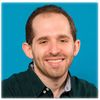
Andrew E. Freedman is a senior editor at Tom's Hardware focusing on laptops, desktops and gaming. He also keeps up with the latest news. A lover of all things gaming and tech, his previous work has shown up in Tom's Guide, Laptop Mag, Kotaku, PCMag and Complex, among others. Follow him on Threads @FreedmanAE and BlueSky @andrewfreedman.net. You can send him tips on Signal: andrewfreedman.01
-
brakteat Indeed. Four years ago when I bought my current laptop, I would not consider buying one with a CPU from AMD because Intel had so much better performance per watt. Now the opposite is true.Reply
This article actually highlights a true embarrassment for Dell, HP and Apple. They have known since long that AMD would offer Zen2-based mobile CPU with an expected much superior performance compared to Intel. Still all three missed the train by launching new high-end models with only Intel CPU. -
mariusmotea I avoid HP and HPE hardware as much as possible after very bad experience with lot of them. Only the laser printers and the L3 switches are quality products.Reply -
jpeters44 Seriously? How can you keep a straight face while recommending the N-th rehashing of the Skylake architecture, still on 14nm, or at best, 10nm? In isolation it's already a tough sell, but facing more power efficient, performant and featured CPU/APUs from AMD then one can only hope this is a Intel sponsored "round-up" since otherwise it would imply a complete loss of credibility from TH.Reply
I'm typing this from a Dell XPS 15 2019 edition with i7 9750H, while my personal new laptop is a 4800U Asus TUF.
It's not even funny. The XPS 15 has a fantastic wide gamut screen, and performance is atrocious. Sure the boost is amazing on paper for the few seconds it can run until thermal limits are hit and the machine throttles down. After 1 year, the keyboard actually bent slightly near the trackpad with the heat and the battery inflated. A replacement was needed. It wasn't an isolated case either - a cursory search for such will reveal lots of angry Dell customers. Luckily the company contract covers it.
Intel just cannot compete, period. The 4800U performance, battery life, expandability, 2x NVME SSDs, 1x SATA SSD or HDD. Sure the screen gamut won't even cover 100% sRGB, but for that you can find better units from Lenovo, and the Asus G14 with the 4900U, just to name a few.
The offers displayed in the article are great if you can get them at 30-50% of their sale price.
In technical merit alone, well, it'll clearly take a bit of time for Intel to catch up. Let's hope they do though, lest AMD "pull an Intel", stop innovating and start charging an arm and a leg for Ryzen rehashes for 5 years. -
Deicidium369 Reply
Good practice - For laptops, for the last 4 or 5 years it's been nothing but Dell.mariusmotea said:I avoid HP and HPE hardware as much as possible after very bad experience with lot of them. Only the laser printers and the L3 switches are quality products. -
Deicidium369 Reply
AMD is not seen as a premium brand.brakteat said:Indeed. Four years ago when I bought my current laptop, I would not consider buying one with a CPU from AMD because Intel had so much better performance per watt. Now the opposite is true.
This article actually highlights a true embarrassment for Dell, HP and Apple. They have known since long that AMD would offer Zen2-based mobile CPU with an expected much superior performance compared to Intel. Still all three missed the train by launching new high-end models with only Intel CPU.
Intel - Premium, Ultrabook, High End
AMD - Another Marketing Deception - basement level, last years models, bargain bin -
Deicidium369 Reply
Renoir is not in a single ultrabook or a single premium laptop.mitch074 said:...and not a single Renoir based machine. -
mitch074 Reply
Which is... Interesting, because that means that current entry level laptops kick the pants off premium laptops when it comes to CPU power and battery efficiency.Deicidium369 said:Renoir is not in a single ultrabook or a single premium laptop.
Wonder why such performance isn't found neither on premium laptops nor ultrabooks. Premium means lousy now ? -
jeremyj_83 Reply
That is such utter BS it is sad to see such statements on Tomshardware forums. Those type of false and rabid fanboyism should be saved for places like wfctech.Deicidium369 said:AMD is not seen as a premium brand.
Intel - Premium, Ultrabook, High End
AMD - Another Marketing Deception - basement level, last years models, bargain bin
It is quite sad that for their consumer products HP, Dell, etc... not putting AMD CPUs in their top of the line designs. However, for us consumers we end up getting superior performance for less cost, see the $649 Acer Swift 3. The biggest issue with that laptop is the screen isn't the best and it could use a better thermal solution, however, you get better CPU & iGPU performance than the i7-1065G7. -
Don Frenser Replyjeremyj_83 said:That is such utter BS it is sad to see such statements on Tomshardware forums. Those type of false and rabid fanboyism should be saved for places like wfctech.
It is quite sad that for their consumer products HP, Dell, etc... not putting AMD CPUs in their top of the line designs. However, for us consumers we end up getting superior performance for less cost, see the $649 Acer Swift 3. The biggest issue with that laptop is the screen isn't the best and it could use a better thermal solution, however, you get better CPU & iGPU performance than the i7-1065G7.
He is not saying he sees it that way. The big spenders in corparation know nothing. They see Intel and they think is it what they want.
They are just stupid.
